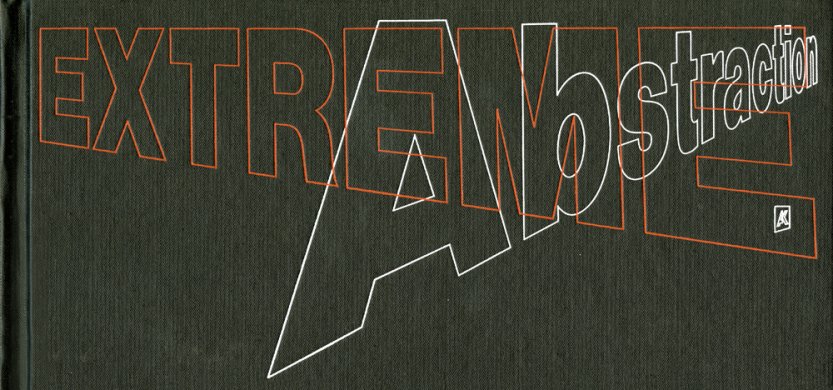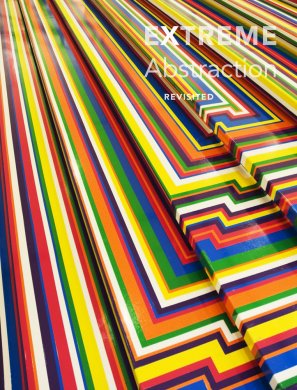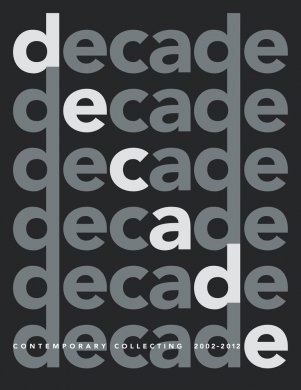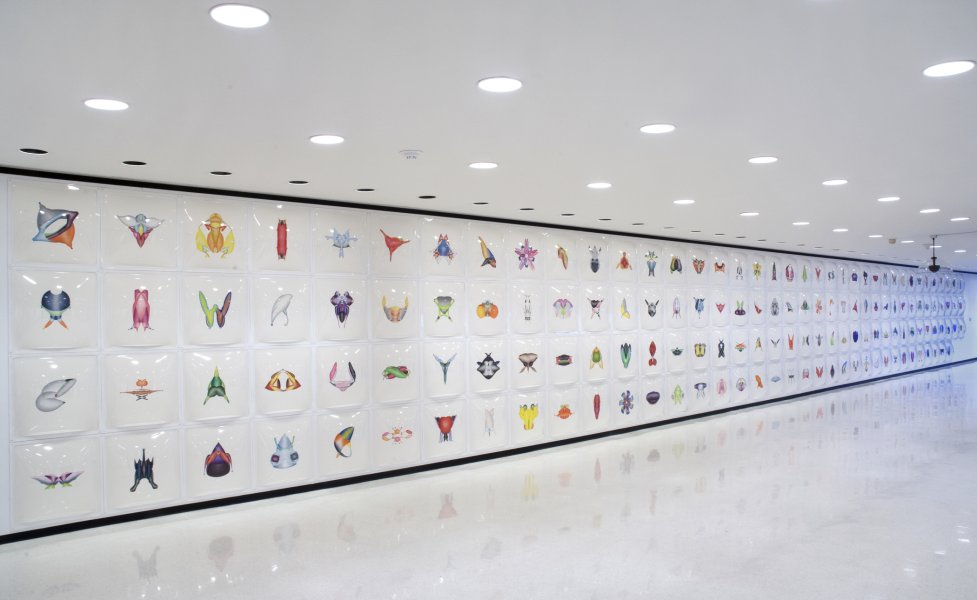Eric and Heather ChanSchatz
American artist collective, 1990 - ca. 2015
Painting PTG.0030 A-K, 2005
Artwork Details
Materials
diptych: screen print on silk
Measurements
right panel (support): 87 x 60 1/2 inches (220.98 x 153.67 cm); left panel (support): 87 x 65 inches (220.98 x 165.1 cm); overall: 87 x 125 inches (220.98 x 317.5 cm)
Collection Buffalo AKG Art Museum
Credit
Sarah Norton Goodyear Fund, 2005
Accession ID
2005:41a-b
Eric and Heather ChanSchatz’s PTG.0030 A-K is the result of a collaboration between the artists and seventeen members of the museum's board. Each person was given a specially designed questionnaire from the artists that asked him or her to choose his or her favorites from preselected groups of characters, colors, and texts. These “characters” resemble symbols or medallions, and are generally symmetrical and similar to insects or parts of a robot. Phrases are also chosen to be used as an interpretive guide to the work’s composition, and come from a wide range of sources, including philosophy, cultural criticism, and science. The result is a work that is abstract yet still reflects the choices and perhaps even the personality of the participants. Here, the purple, green, and black areas in the upper portion of the work reflect selections made by museum staff, while the blue, red, and orange areas in the lower portion reflect those made by board members.
ChanSchatz is the collaborative duo of artists Eric Chan and Heather Schatz. Their work blends traditional painting techniques with photography, design, digital media, and fashion and influences from Conceptual art from the 1960s, such as the Fluxus movement. It also relates to Abstract Expressionism by alluding to the idea of self-expression through mark-making and color. However, instead of reflecting their own identity in their art, as the artists associated with this mid-twentieth-century movement did, they instead turn their work into an expression of the identities of their participants. Through a complex process of hand-drawing, digital preparation, and screenprinting on a silk canvas, ChanSchatz’s work aims at understanding the human decision-making process through mechanical processes as a complementary force.
Object label from a 2007 installation







